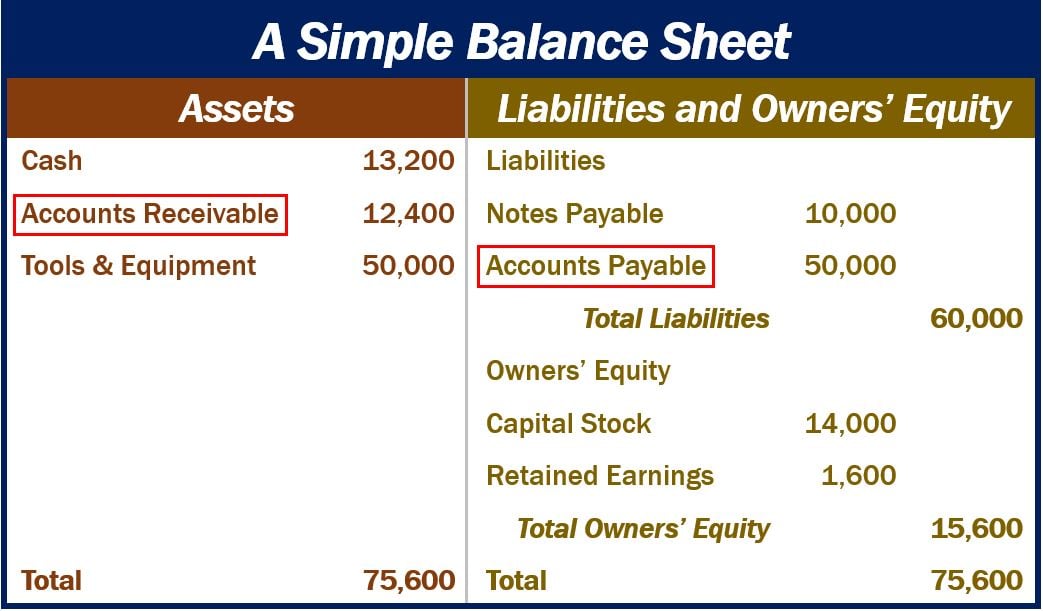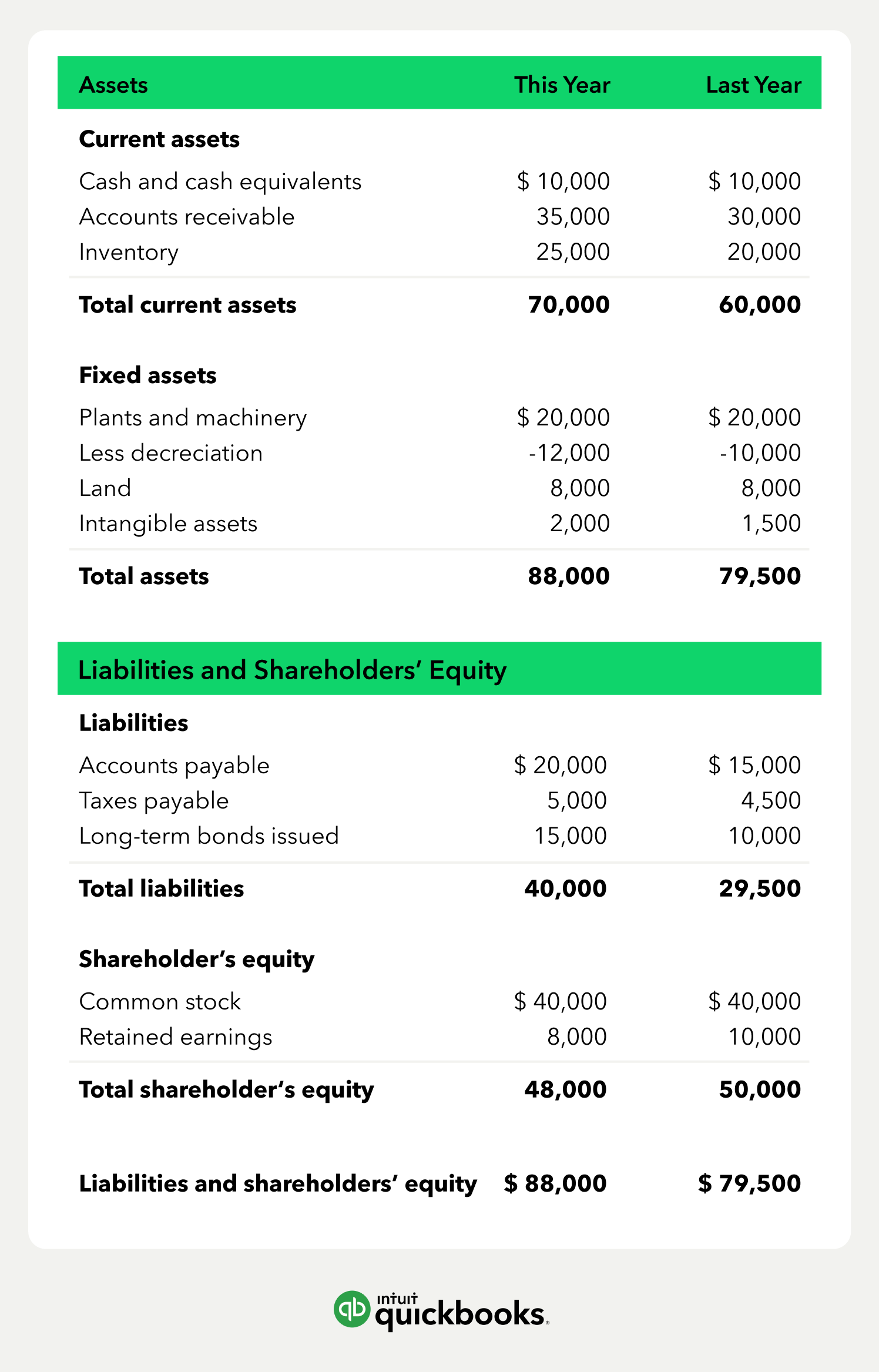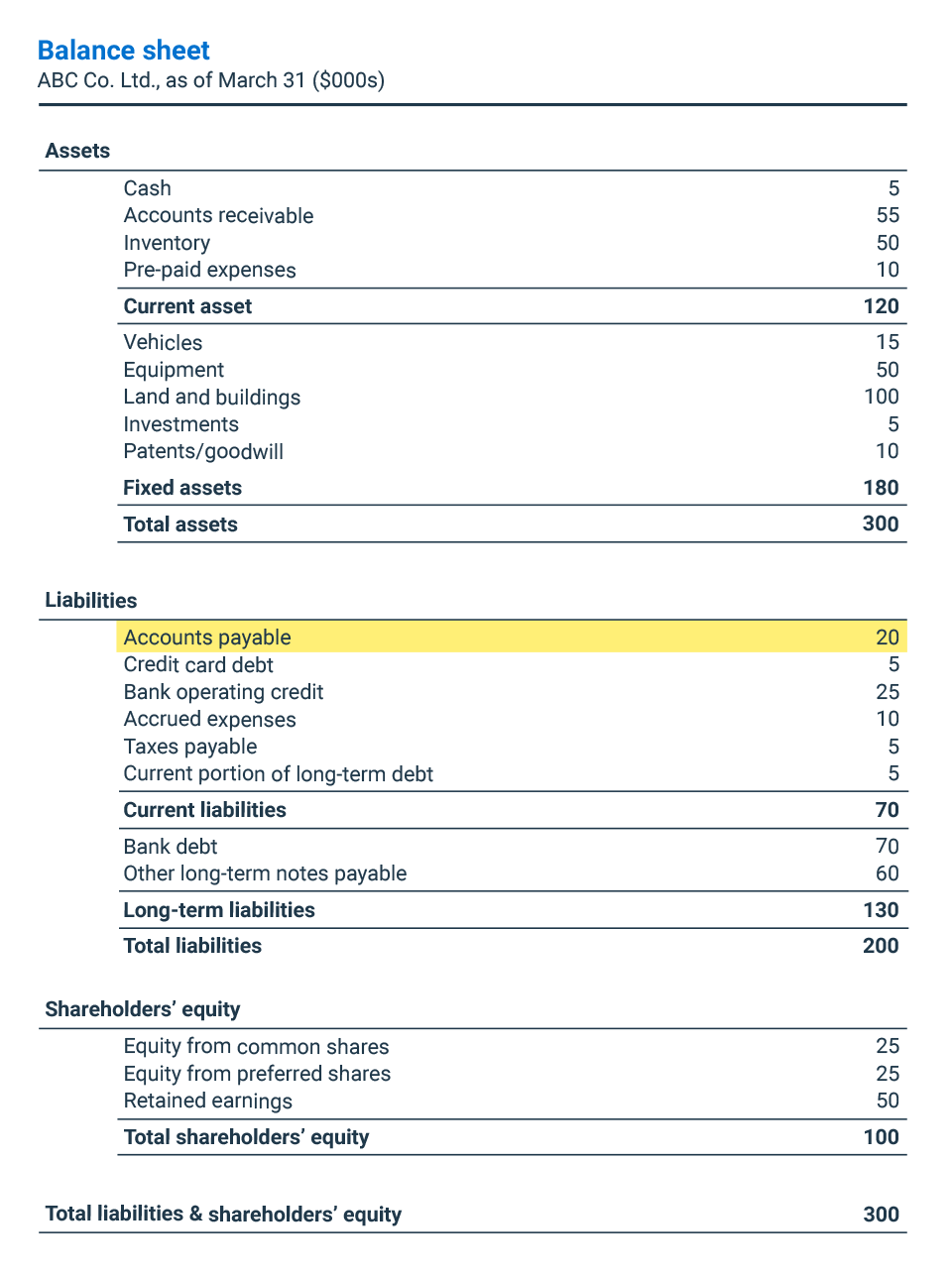What Is Accounts Payable On A Balance Sheet - Accounts payable affects both the balance sheet, as a current liability, and the income statement, through the matching. When a company purchases goods and services from a supplier or creditor on credit that needs to be paid back quickly. Accounts payableis a current liability recognized on the balance sheet to measure the unpaid bills owed to suppliers and. Accounts payable are the amounts owed by a business to its vendors or creditors for goods or services purchased on credit.
Accounts payable are the amounts owed by a business to its vendors or creditors for goods or services purchased on credit. When a company purchases goods and services from a supplier or creditor on credit that needs to be paid back quickly. Accounts payableis a current liability recognized on the balance sheet to measure the unpaid bills owed to suppliers and. Accounts payable affects both the balance sheet, as a current liability, and the income statement, through the matching.
When a company purchases goods and services from a supplier or creditor on credit that needs to be paid back quickly. Accounts payable affects both the balance sheet, as a current liability, and the income statement, through the matching. Accounts payable are the amounts owed by a business to its vendors or creditors for goods or services purchased on credit. Accounts payableis a current liability recognized on the balance sheet to measure the unpaid bills owed to suppliers and.
How Do You Calculate Accounts Payable On A Balance Sheet at Sara Gosman
Accounts payable are the amounts owed by a business to its vendors or creditors for goods or services purchased on credit. When a company purchases goods and services from a supplier or creditor on credit that needs to be paid back quickly. Accounts payable affects both the balance sheet, as a current liability, and the income statement, through the matching..
Accounts Receivable vs Accounts Payable
Accounts payable affects both the balance sheet, as a current liability, and the income statement, through the matching. When a company purchases goods and services from a supplier or creditor on credit that needs to be paid back quickly. Accounts payable are the amounts owed by a business to its vendors or creditors for goods or services purchased on credit..
Accounts Payable (AP) What They Are and How to Interpret Pareto Labs
When a company purchases goods and services from a supplier or creditor on credit that needs to be paid back quickly. Accounts payable are the amounts owed by a business to its vendors or creditors for goods or services purchased on credit. Accounts payableis a current liability recognized on the balance sheet to measure the unpaid bills owed to suppliers.
What is accounts receivable? Definition and examples
Accounts payable affects both the balance sheet, as a current liability, and the income statement, through the matching. When a company purchases goods and services from a supplier or creditor on credit that needs to be paid back quickly. Accounts payable are the amounts owed by a business to its vendors or creditors for goods or services purchased on credit..
How to Read & Prepare a Balance Sheet QuickBooks
When a company purchases goods and services from a supplier or creditor on credit that needs to be paid back quickly. Accounts payable affects both the balance sheet, as a current liability, and the income statement, through the matching. Accounts payable are the amounts owed by a business to its vendors or creditors for goods or services purchased on credit..
Bills Payable in Balance Sheet Double Entry Bookkeeping
When a company purchases goods and services from a supplier or creditor on credit that needs to be paid back quickly. Accounts payable are the amounts owed by a business to its vendors or creditors for goods or services purchased on credit. Accounts payable affects both the balance sheet, as a current liability, and the income statement, through the matching..
What are accounts payable? BDC.ca
Accounts payable are the amounts owed by a business to its vendors or creditors for goods or services purchased on credit. Accounts payableis a current liability recognized on the balance sheet to measure the unpaid bills owed to suppliers and. Accounts payable affects both the balance sheet, as a current liability, and the income statement, through the matching. When a.
What is accounts payable? Definition and examples
Accounts payableis a current liability recognized on the balance sheet to measure the unpaid bills owed to suppliers and. Accounts payable affects both the balance sheet, as a current liability, and the income statement, through the matching. When a company purchases goods and services from a supplier or creditor on credit that needs to be paid back quickly. Accounts payable.
What are Accounts Receivable and Accounts Payable?
Accounts payableis a current liability recognized on the balance sheet to measure the unpaid bills owed to suppliers and. Accounts payable affects both the balance sheet, as a current liability, and the income statement, through the matching. Accounts payable are the amounts owed by a business to its vendors or creditors for goods or services purchased on credit. When a.
Balance sheet example track assets and liabilities
Accounts payableis a current liability recognized on the balance sheet to measure the unpaid bills owed to suppliers and. Accounts payable are the amounts owed by a business to its vendors or creditors for goods or services purchased on credit. When a company purchases goods and services from a supplier or creditor on credit that needs to be paid back.
Accounts Payable Are The Amounts Owed By A Business To Its Vendors Or Creditors For Goods Or Services Purchased On Credit.
When a company purchases goods and services from a supplier or creditor on credit that needs to be paid back quickly. Accounts payable affects both the balance sheet, as a current liability, and the income statement, through the matching. Accounts payableis a current liability recognized on the balance sheet to measure the unpaid bills owed to suppliers and.









